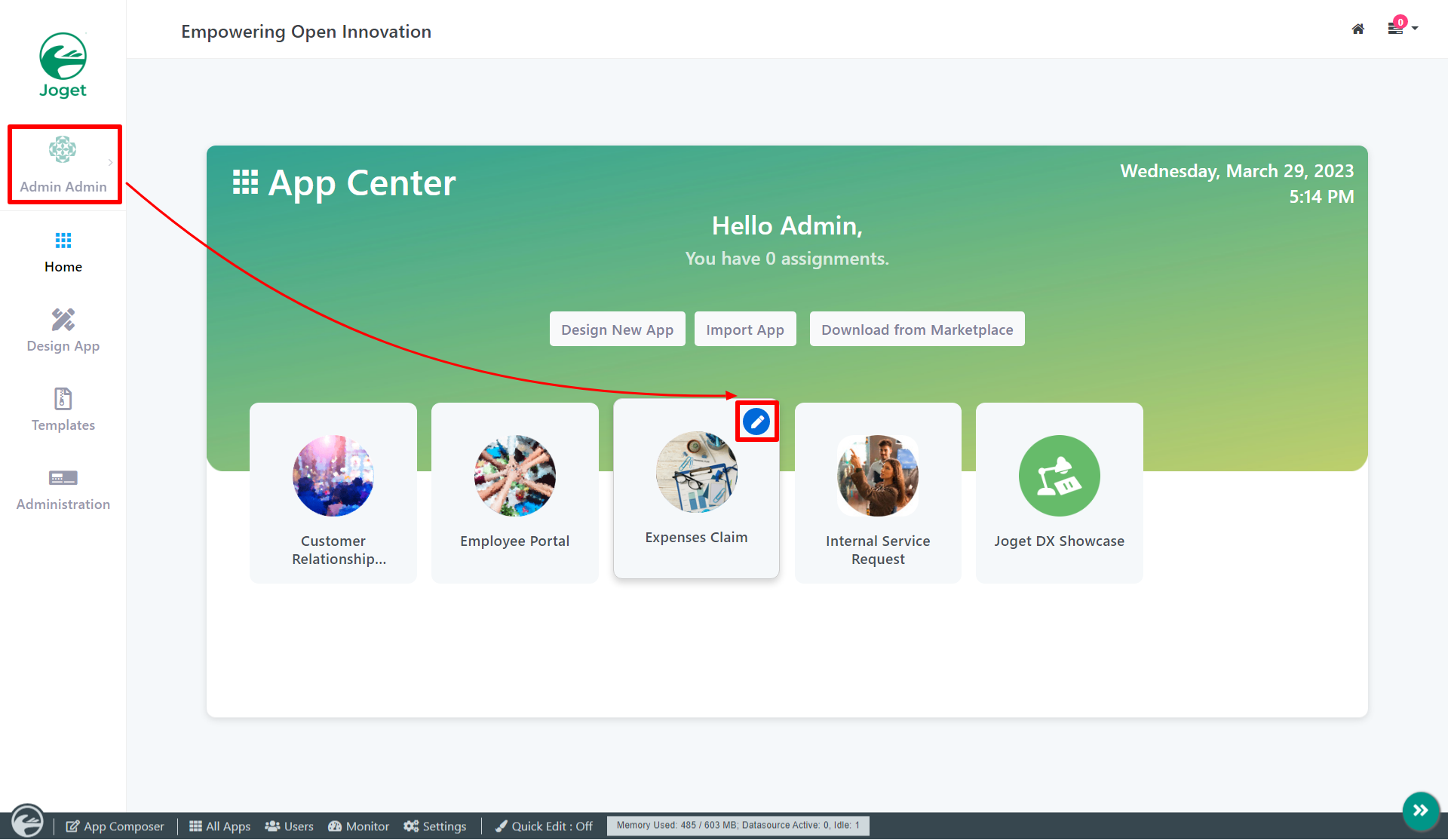The section is the placeholder to hold Form Elements. Each section has one column in it by default. |
To see how Section works, the default bundled Expenses Claims app will be used for this example.

Click on the Section element to open the Configure Section properties.

Figure 2

| Name | Description |
|---|---|
| Label | Section label. |
| ID | Element ID. Since the section is not an input field, it is optional to change this. Please see Form Element for more information about defining the ID and list of reserved IDs. |
| Readonly | Determines if the element is editable. |
| Display Field as Label When Readonly? | Displays the value of the element as plain text when an element is set to "Readonly". |

| Name | Description |
|---|---|
| Load Data From | Optional by default. When it is not set, it will use the parent's data store. You may override this behavior by using its own designated data store by defining it. Available options:
|
| Save Data To | Optional by default. When it is not set, it will use the parent's data store. You may override this behavior by using its own designated data store by defining it. Available options:
|
There are several feature enhancements for Joget DX version 8.1 onward. It is explained below.
This applies to Joget DX version 8.1 onwards
|
This applies to Joget DX version 8.0.12 and before.
|

| Name | Description |
|---|---|
| Permission | Manage the permission on who to see this section. See Permission Control. Available options:
|
| Show as Readonly When No Permission? | Displays the value of the element as plain text when a user's permission is denied. |

| Name | Description |
|---|---|
| Comment | Appends a helper text beside this section when in the form builder, to help app designers identify the section. |
APP_booleanTest-sample.jwa
APP_kb_dx8_testSection.jwa.